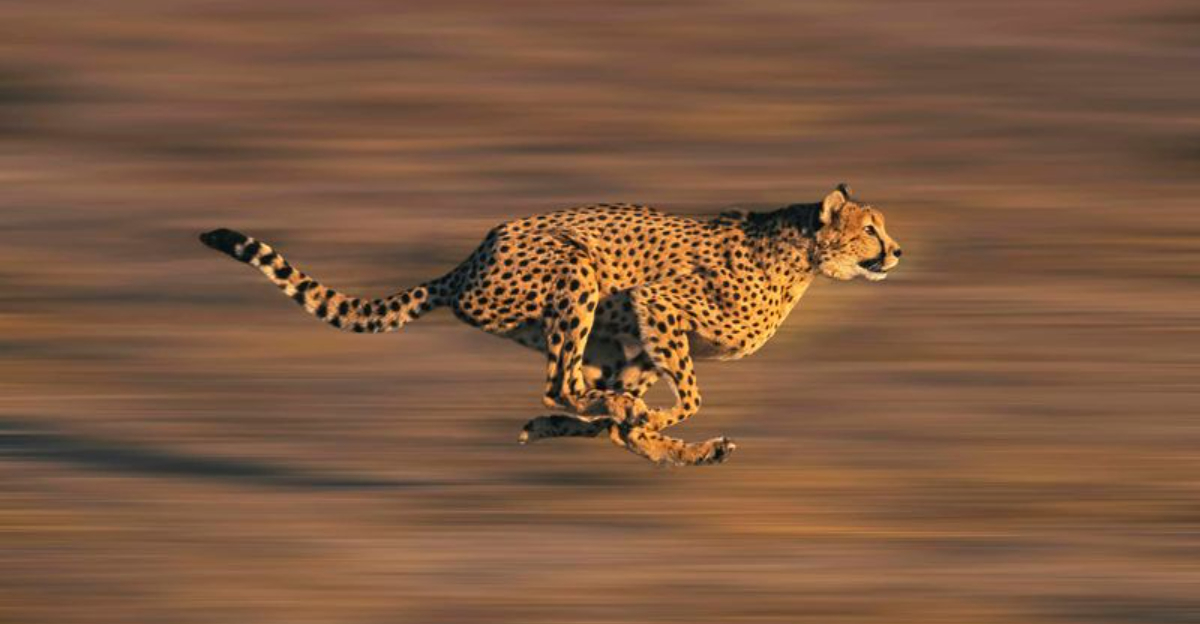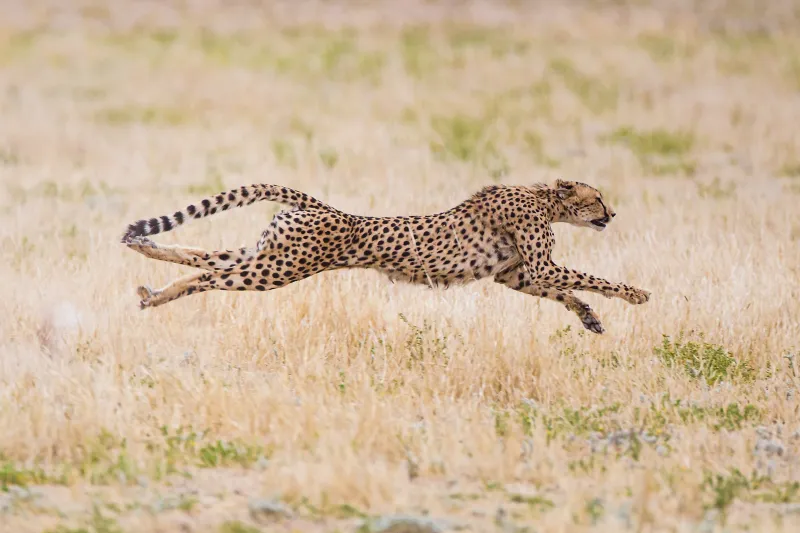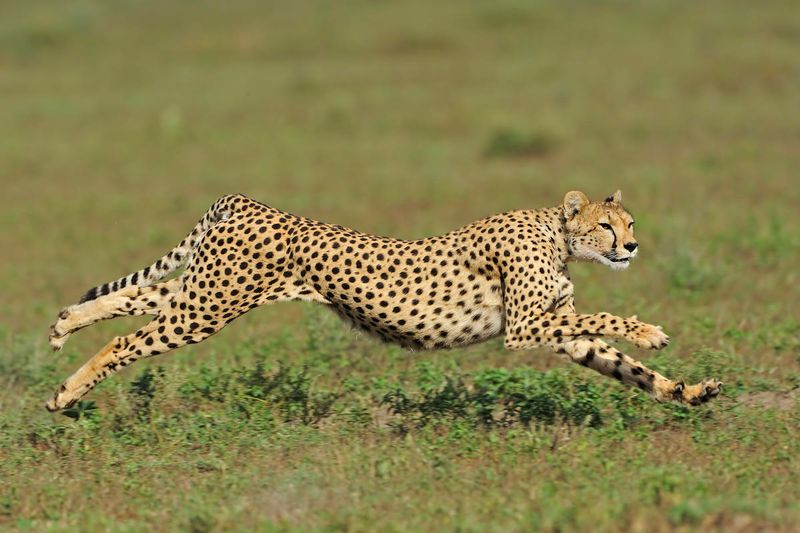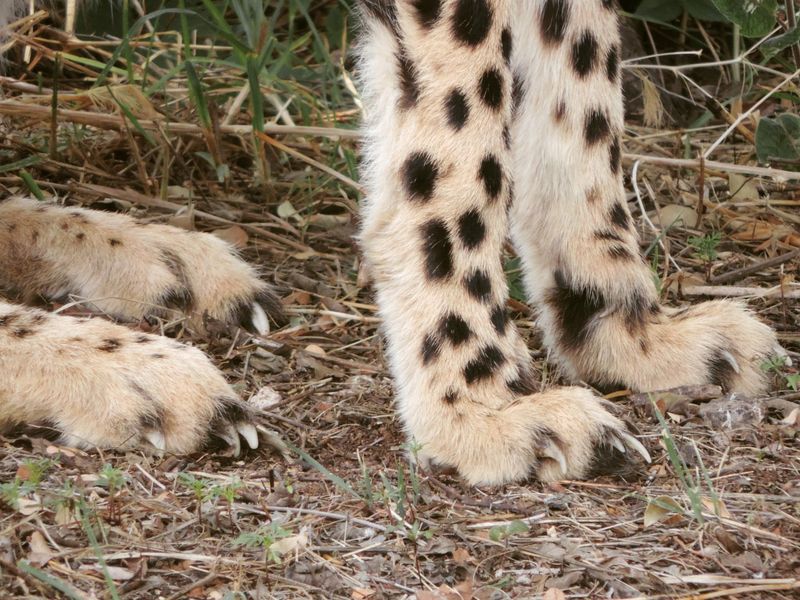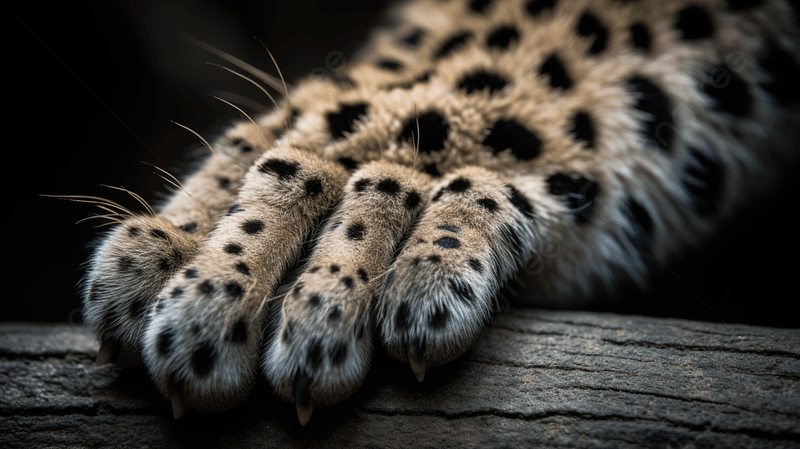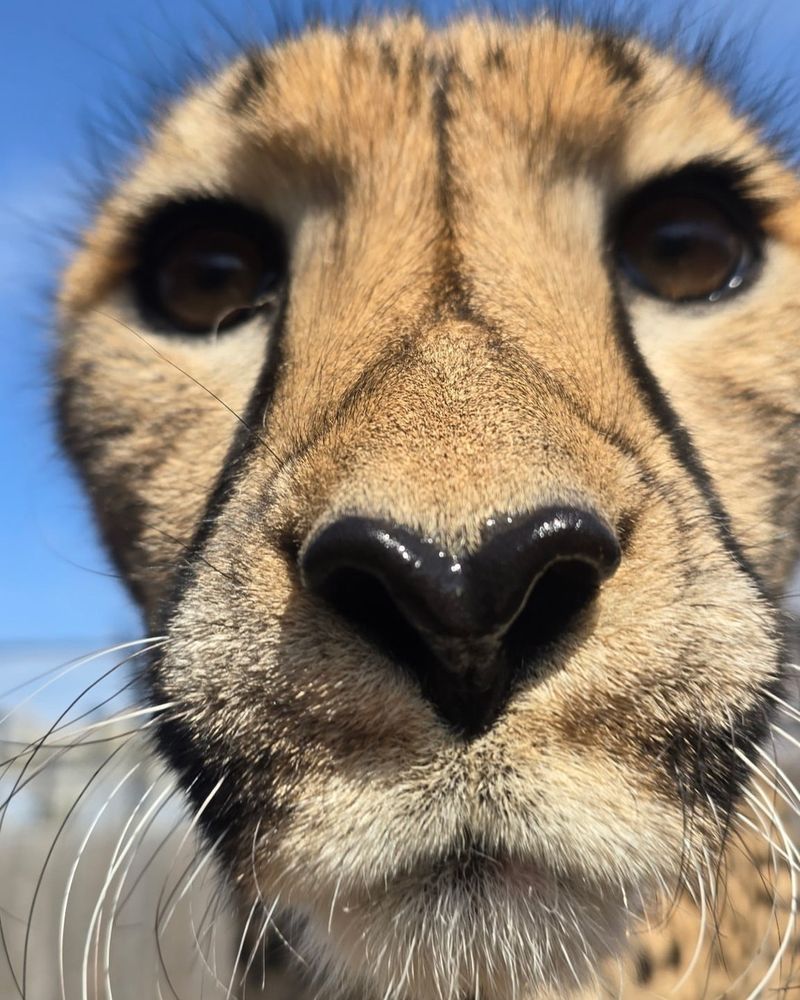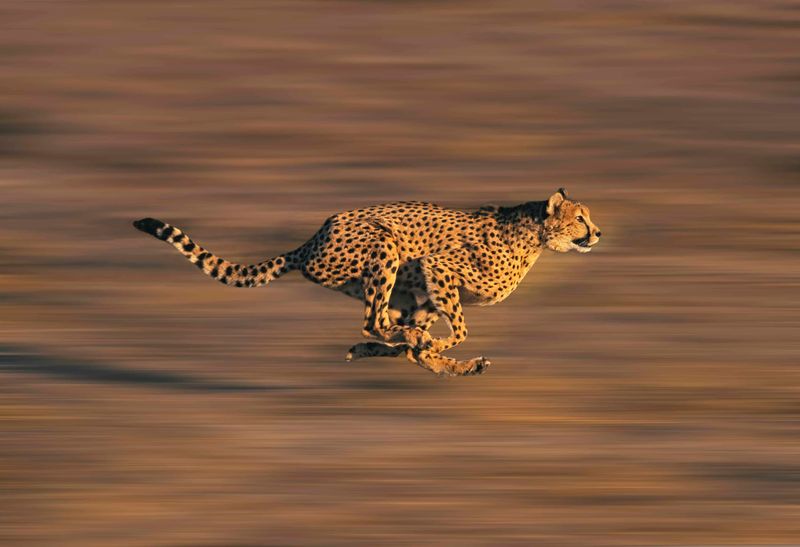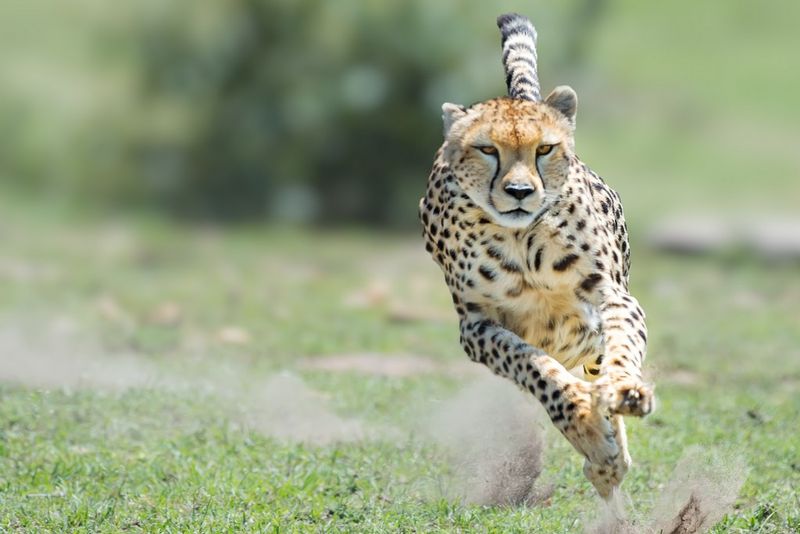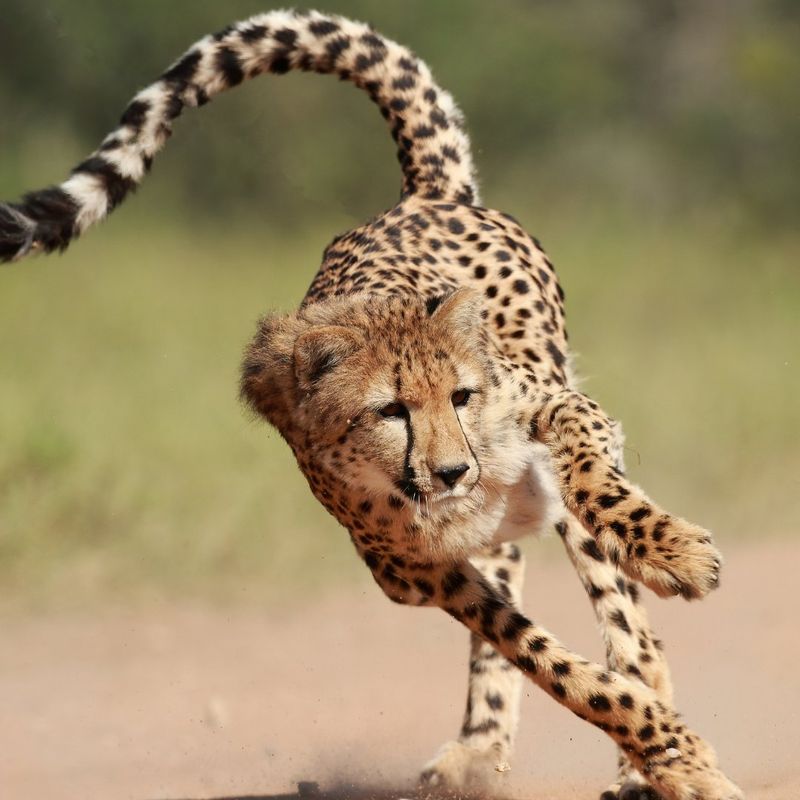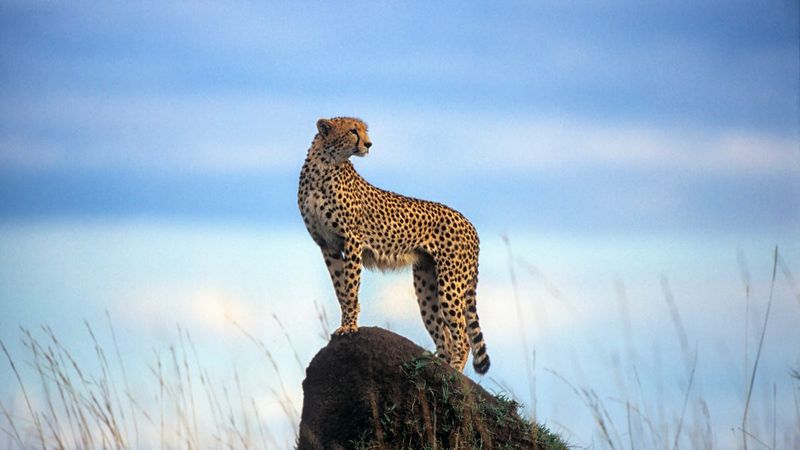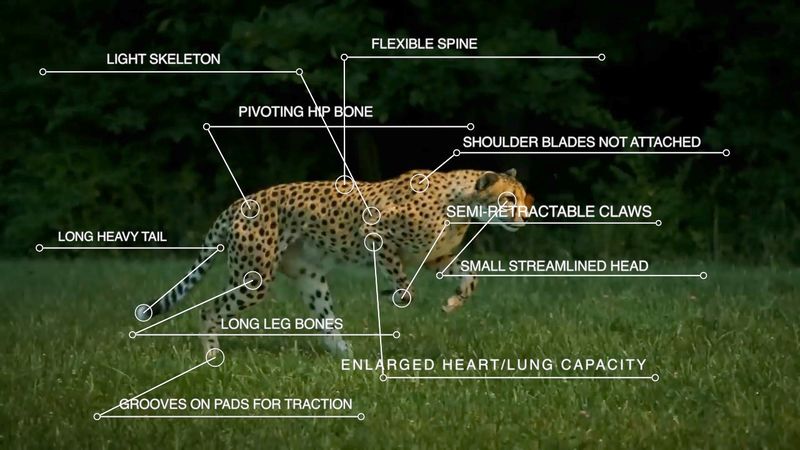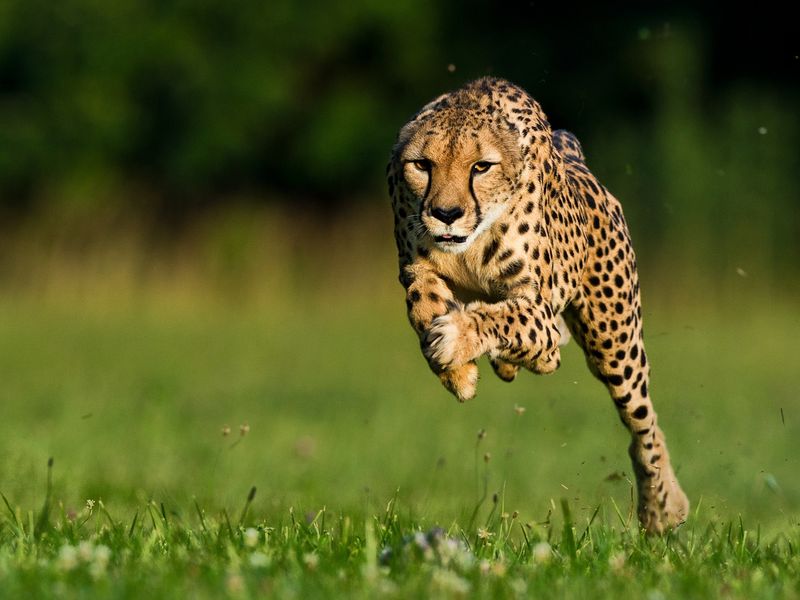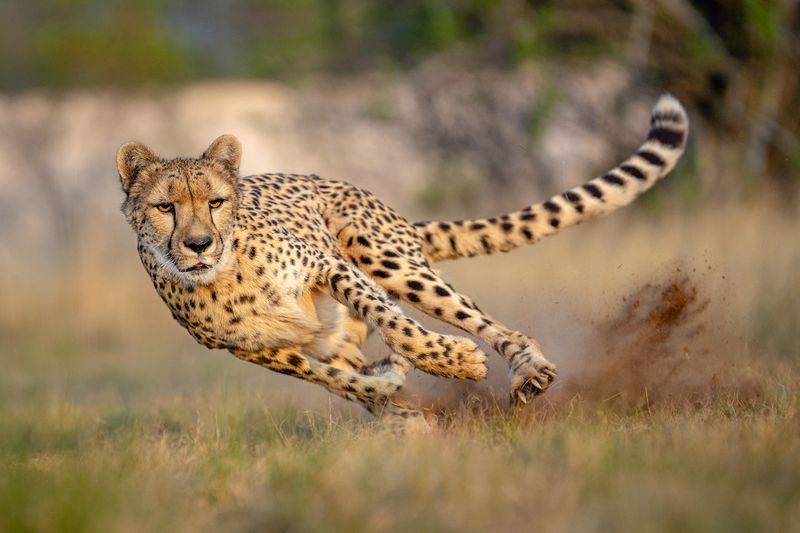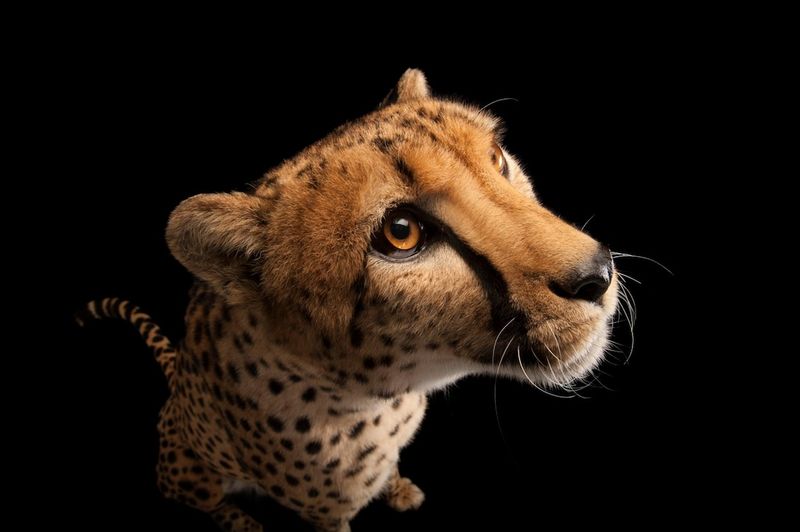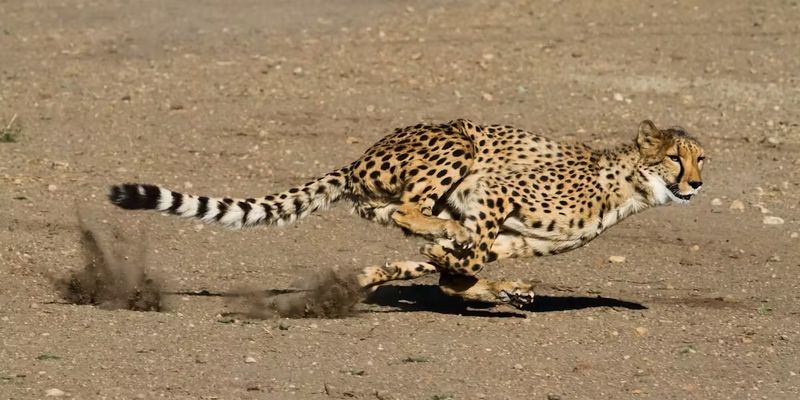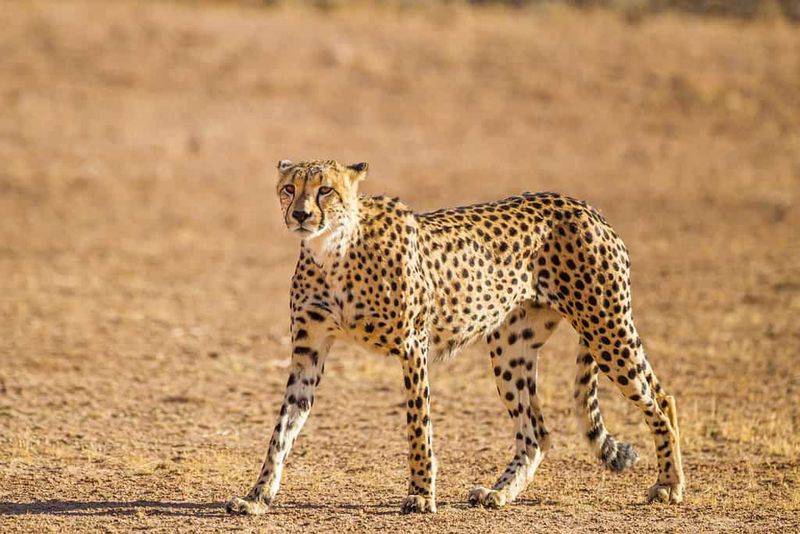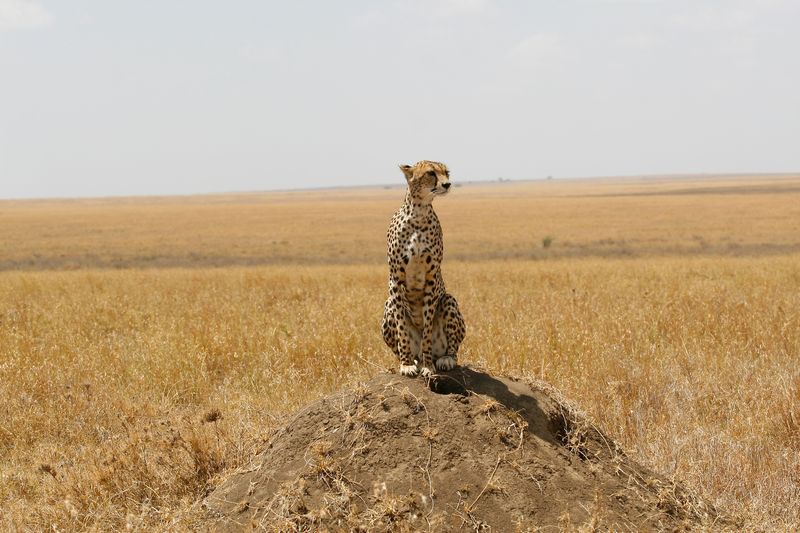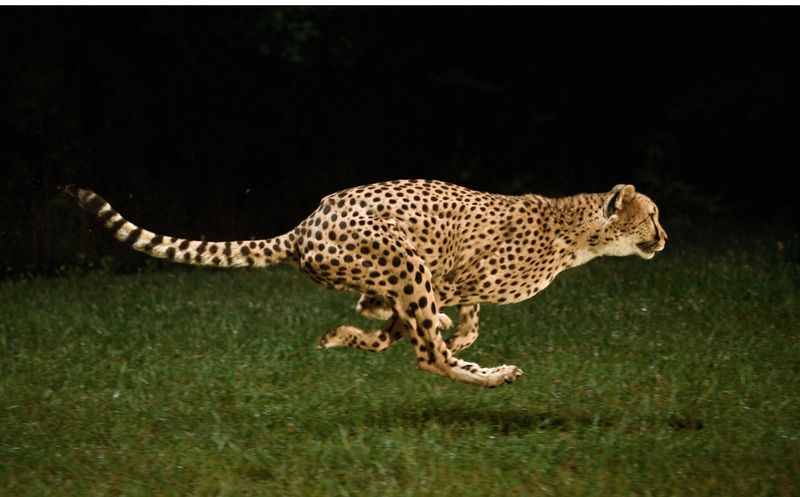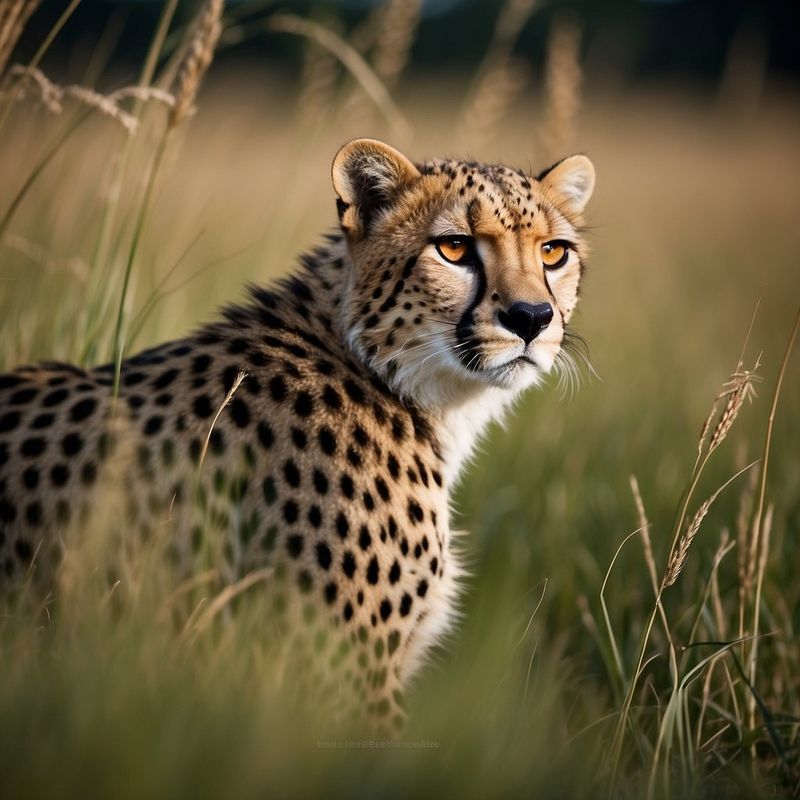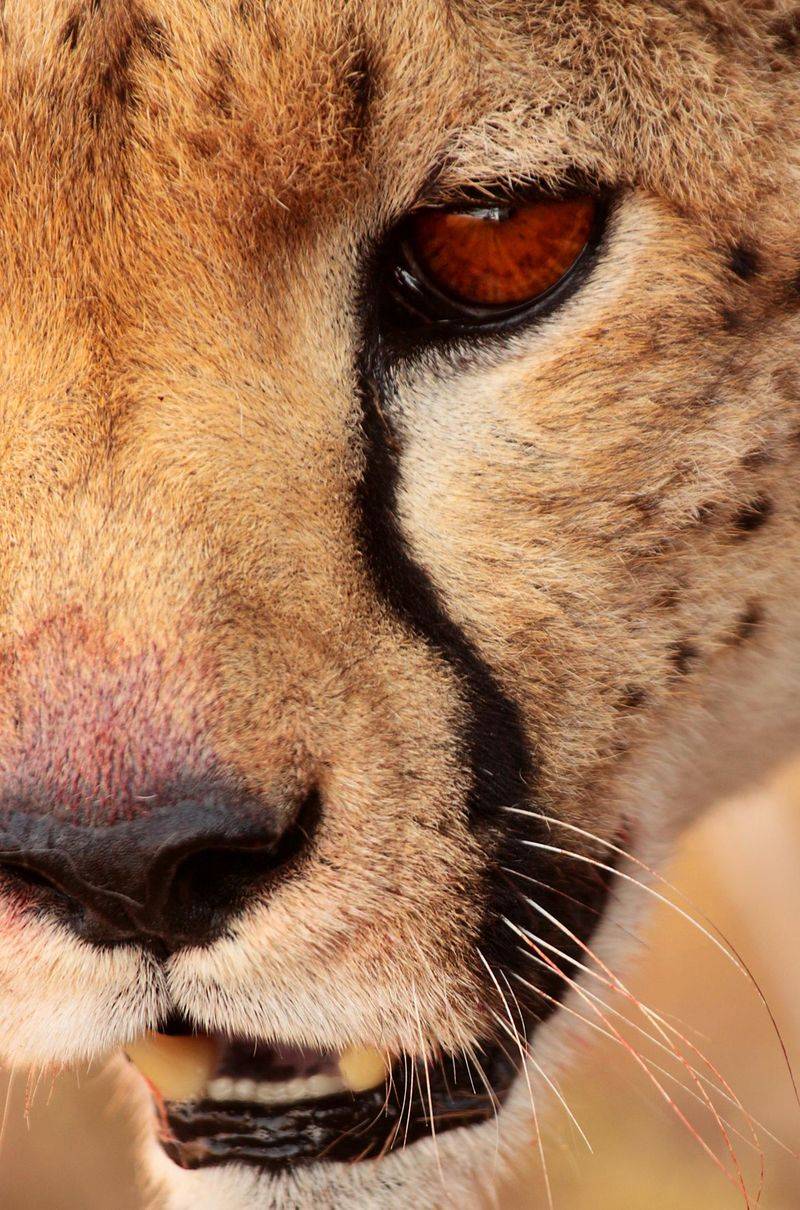📖 Table of Content:
- 1. Streamlined Body Structure
- 2. Flexible Spine
- 3. Semi-Retractable Claws
- 4. Non-Slip Paw Pads
- 5. Enlarged Nasal Passages and Lungs
- 6. High Concentration of Fast-Twitch Muscle Fibers
- 7. Large Heart and Lungs
- 8. Long Tail for Balance
- 9. Exceptional Vision
- 10. Lightweight Skeleton
- 11. High Acceleration
- 12. Aerodynamic Body Shape
- 13. Large Nostrils and Air-Filled Sinuses
- 14. High Red Blood Cell Count
- 15. Specialized Leg Muscles
- 16. Unique Breathing Pattern
- 17. High-Speed Maneuverability
- 18. Short Sprint Duration
- 19. Camouflaged Coat
- 20. Tear Marks for Sun Glare Reduction
Cheetahs are celebrated for their unrivaled speed, making them the fastest land animals and exceptional hunters. Their remarkable ability to stretch their limits to reach speeds up to 70 mph is a testament to their evolutionary prowess. This incredible speed is achieved through various anatomical and physiological traits that work in harmony. From their streamlined bodies to their powerful muscles, cheetahs are built for speed. Here are 20 reasons why cheetahs have earned the title of the fastest hunters on Earth, each highlighting a unique aspect of their extraordinary adaptations.
1. Streamlined Body Structure
The cheetah’s body is a marvel of aerodynamic engineering, designed to slice through the air with minimal resistance. Its sleek and slender frame, accompanied by elongated limbs, creates an ideal shape for high-speed pursuits. This lightweight design allows cheetahs to conserve energy while reaching astounding speeds. The combination of these physical attributes enables rapid acceleration and agile maneuverability, essential for hunting swift prey. The cheetah’s unique body structure is a testament to evolution’s role in crafting a perfect speed machine.
2. Flexible Spine
Imagine a spine so flexible it acts like a spring, propelling a creature forward with effortless grace. This is the reality for cheetahs, whose spine extends and contracts during each stride, allowing for greater reach. This remarkable adaptation is crucial for achieving their phenomenal speed. By stretching and recoiling, the spine increases their stride length, enabling them to cover more ground with each bound. It’s this elasticity that gives cheetahs their explosive acceleration and ability to maintain top speeds over short distances.
3. Semi-Retractable Claws
Cheetahs are unique among big cats, possessing semi-retractable claws that provide unparalleled grip and traction. Unlike their feline counterparts, who retract their claws, cheetahs keep theirs extended to dig into the ground as they run. This adaptation offers superior stability and control, especially during sharp turns and sprints. The claws function much like a sprinter’s spikes, ensuring the cheetah remains stable while pursuing prey at high speeds. This feature is integral to their success as hunters on the African plains.
4. Non-Slip Paw Pads
With textured non-slip paw pads, cheetahs maintain traction even on slippery surfaces. These pads, rough and ridged, provide the necessary grip to prevent slipping during rapid chases. Their unique design enhances the cheetah’s ability to make swift, agile movements, crucial for tracking fast-moving prey. This adaptation is pivotal in enabling cheetahs to execute high-speed maneuvers with confidence and accuracy. The texture of their paw pads ensures they can handle the demands of high-speed pursuits without losing their footing.
5. Enlarged Nasal Passages and Lungs
Breathe deeply; that’s what cheetahs do with their enlarged nasal passages and lungs. This adaptation allows them to take in vast amounts of oxygen, fueling their muscles during intense chases. The large nostrils and capacious lungs ensure a steady supply of oxygen, vital for maintaining speed. During a sprint, a cheetah’s respiratory rate increases dramatically, and these features support this rapid breathing. With enhanced oxygen delivery, cheetahs can sustain their incredible bursts of speed, making them formidable hunters.
6. High Concentration of Fast-Twitch Muscle Fibers
Ever wondered how cheetahs sprint so quickly? The secret lies in their high concentration of fast-twitch muscle fibers, which provide explosive power and speed. These fibers contract rapidly, allowing for quick acceleration and agile movements. However, they tire quickly, which is why cheetahs are sprinters, not marathon runners. The abundance of these fibers enables cheetahs to reach remarkable speeds and catch swift prey, but only for short bursts. This specialized musculature is key to their success in the wild.
7. Large Heart and Lungs
A big heart isn’t just a metaphor for kindness; in cheetahs, it’s a literal advantage. Their large heart and lungs enable efficient oxygen transport, crucial for sustaining high-speed chases. These organs work in tandem to pump oxygen-rich blood swiftly to the muscles, keeping them fueled and ready. This system supports the cheetah’s incredible stamina during short bursts of speed, allowing for powerful hunts. By optimizing their cardiovascular efficiency, cheetahs remain unmatched in their ability to pursue prey at lightning speeds.
8. Long Tail for Balance
Picture a tightrope walker using a pole for balance; a cheetah’s long tail serves a similar purpose. This muscular appendage acts as a dynamic counterbalance during high-speed chases. As cheetahs zigzag after prey, their tails help them maintain stability and guide direction. This rudder-like function is crucial for making sharp turns without losing momentum. The tail’s role in balancing the cheetah’s agile movements is an evolutionary masterpiece, proving essential in the pursuit of their prey across the savanna.
9. Exceptional Vision
Spotting prey from afar is no challenge for cheetahs, thanks to their exceptional vision. These big cats have keen eyesight that allows them to detect movement and identify targets from great distances. This advantage lets them plan their approach carefully, minimizing energy expenditure and maximizing success. Their eyes are adapted to focus sharply, even in low light, ensuring they never miss a potential meal. This heightened sense of sight is a critical component of their hunting prowess, elevating their efficiency as predators.
10. Lightweight Skeleton
Imagine a racecar built for speed, with every component fine-tuned for performance. A cheetah’s lightweight skeleton functions similarly, reducing energy expenditure and enhancing speed. This structural adaptation allows them to accelerate swiftly and sustain high velocities. The skeletal design minimizes weight without sacrificing strength, ensuring cheetahs can endure the rigors of fast-paced chases. By optimizing their bone structure, cheetahs maintain agility and speed, key elements of their hunting strategy. This evolutionary trait underscores the cheetah’s role as nature’s speedster.
11. High Acceleration
From zero to 60 mph in three seconds; cheetahs achieve acceleration that rivals sports cars. This rapid acceleration is critical for catching quick-footed prey. The combination of powerful leg muscles, a flexible spine, and semi-retractable claws enables this explosive speed. Cheetahs can close in on their targets with remarkable swiftness, an essential trait for successful hunts. This ability to accelerate quickly distinguishes them from other predators, allowing them to launch surprise attacks with precision and effectiveness.
12. Aerodynamic Body Shape
With a body sculpted for minimal air resistance, cheetahs are natural speedsters. Their small head, flat ribcage, and slim profile contribute to an aerodynamic shape that enhances speed. This design minimizes drag as they sprint, allowing them to cut through the air with ease. The streamlined form not only aids in speed but also in agility, enabling quick directional changes during chases. This aerodynamic efficiency is a key factor in the cheetah’s ability to outrun and outmaneuver prey on the open plains.
13. Large Nostrils and Air-Filled Sinuses
Think of the cheetah’s nose as a high-performance air intake. Their large nostrils and air-filled sinuses are crucial for maximizing oxygen intake during sprints. This anatomical feature allows cheetahs to sustain their rapid breathing rate, providing the necessary fuel for their muscles. These adaptations ensure that every breath taken is as efficient as possible, supporting their relentless pursuit of prey. The ability to inhale large volumes of air quickly is a vital aspect of their speed-enhancing physiology.
14. High Red Blood Cell Count
Cheetahs have a high red blood cell count, a crucial factor in their ability to sustain speed. These cells transport oxygen efficiently, ensuring muscles receive the fuel they need during sprints. This oxygen-rich blood supply allows cheetahs to maintain their burst of speed for the crucial seconds required to catch prey. The enhanced circulatory system is a unique trait that supports their role as the fastest land predators. It’s a testament to their adaptation to a life of speed and agility.
15. Specialized Leg Muscles
Long, slender limbs packed with specialized muscles give cheetahs their explosive speed. These muscles, particularly rich in fast-twitch fibers, provide the power needed for rapid acceleration. The design of their legs, including elongated bones and strong tendons, supports this swift movement. This muscular prowess enables cheetahs to leap forward with each stride, covering vast distances quickly. The efficiency and strength of their leg muscles are central to their identity as formidable hunters, built for catching swift prey.
16. Unique Breathing Pattern
The cheetah’s breath syncs with its stride, a unique adaptation that maximizes oxygen intake during high-speed pursuits. This synchronization ensures that every inhalation is timed to coincide with the extension of their body, optimizing respiratory efficiency. By matching their breathing to their movement, cheetahs maintain the oxygen flow necessary to fuel their muscles. This adaptation is a fine example of how their bodies are engineered for speed, allowing them to excel in the art of the chase.
17. High-Speed Maneuverability
Agility at high speeds is a cheetah’s forte, enabling them to change direction swiftly while maintaining momentum. This high-speed maneuverability is crucial when pursuing agile prey. Their flexible spine, long tail, and semi-retractable claws all contribute to these rapid directional changes. This ability to zigzag and pivot without losing speed gives cheetahs a distinct advantage over their prey, outmatching them in both speed and agility. It’s a testament to their evolutionary refinement as consummate hunters.
18. Short Sprint Duration
Cheetahs are sprinters, not long-distance runners, capable of maintaining top speed for only 20 to 30 seconds. This short sprint duration requires them to be efficient and precise in their hunts. They rely on surprise and rapid acceleration to catch prey before fatigue sets in. This limitation shapes their hunting strategy, focusing on short, intense bursts rather than prolonged pursuits. The brevity of their sprint is compensated by their incredible speed, making every second count in the chase.
19. Camouflaged Coat
The cheetah’s coat, adorned with unique spots, provides more than just beauty; it’s a crucial tool for stealth. This camouflage allows them to blend seamlessly into their surroundings, approaching prey without detection. The pattern of spots breaks up their outline, masking their movements in the grasslands. This stealthy approach is vital for getting close to unsuspecting prey, setting the stage for a successful sprint. The cheetah’s ability to remain hidden until the perfect moment is a cornerstone of their hunting strategy.
20. Tear Marks for Sun Glare Reduction
The cheetah’s distinctive black tear marks are more than a facial feature; they serve a functional purpose. These marks reduce sun glare, enhancing the cheetah’s focus on prey during hunts. Positioned strategically beneath their eyes, they work like natural sunglasses. This adaptation is particularly useful in the bright African sun, allowing cheetahs to spot and pursue prey without distraction. The tear marks highlight the cheetah’s evolutionary ingenuity, optimizing their vision for the hunt.
